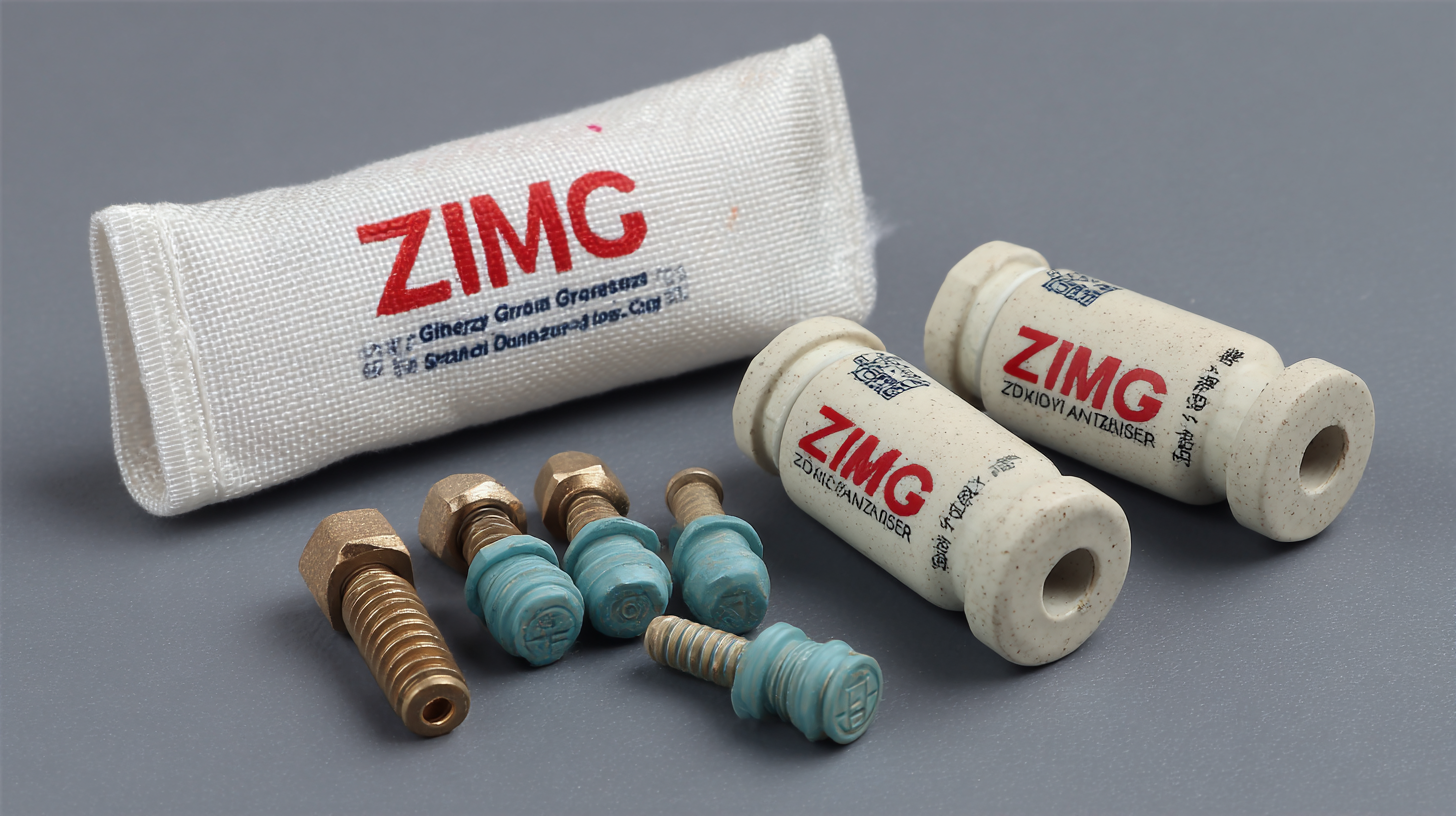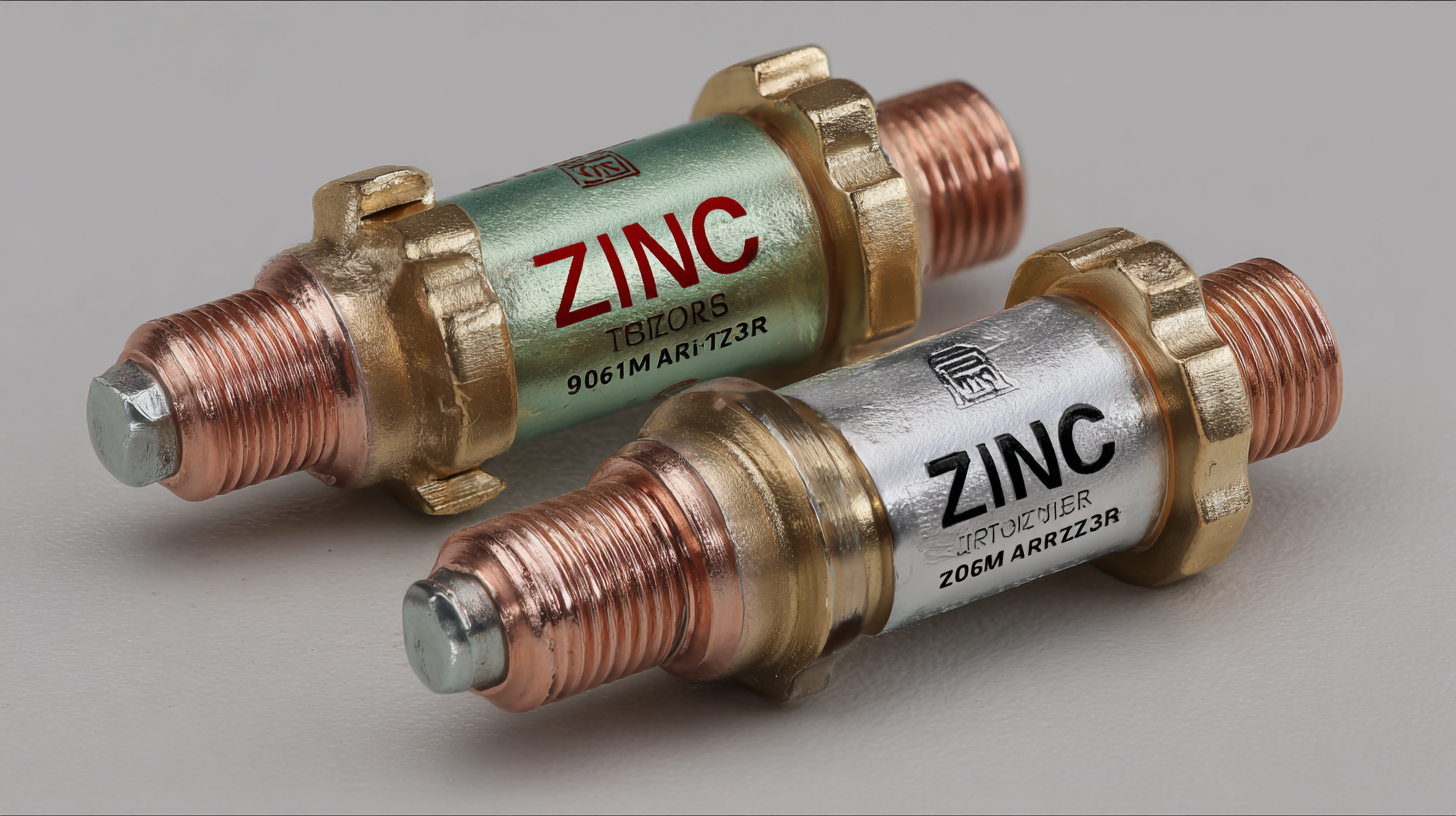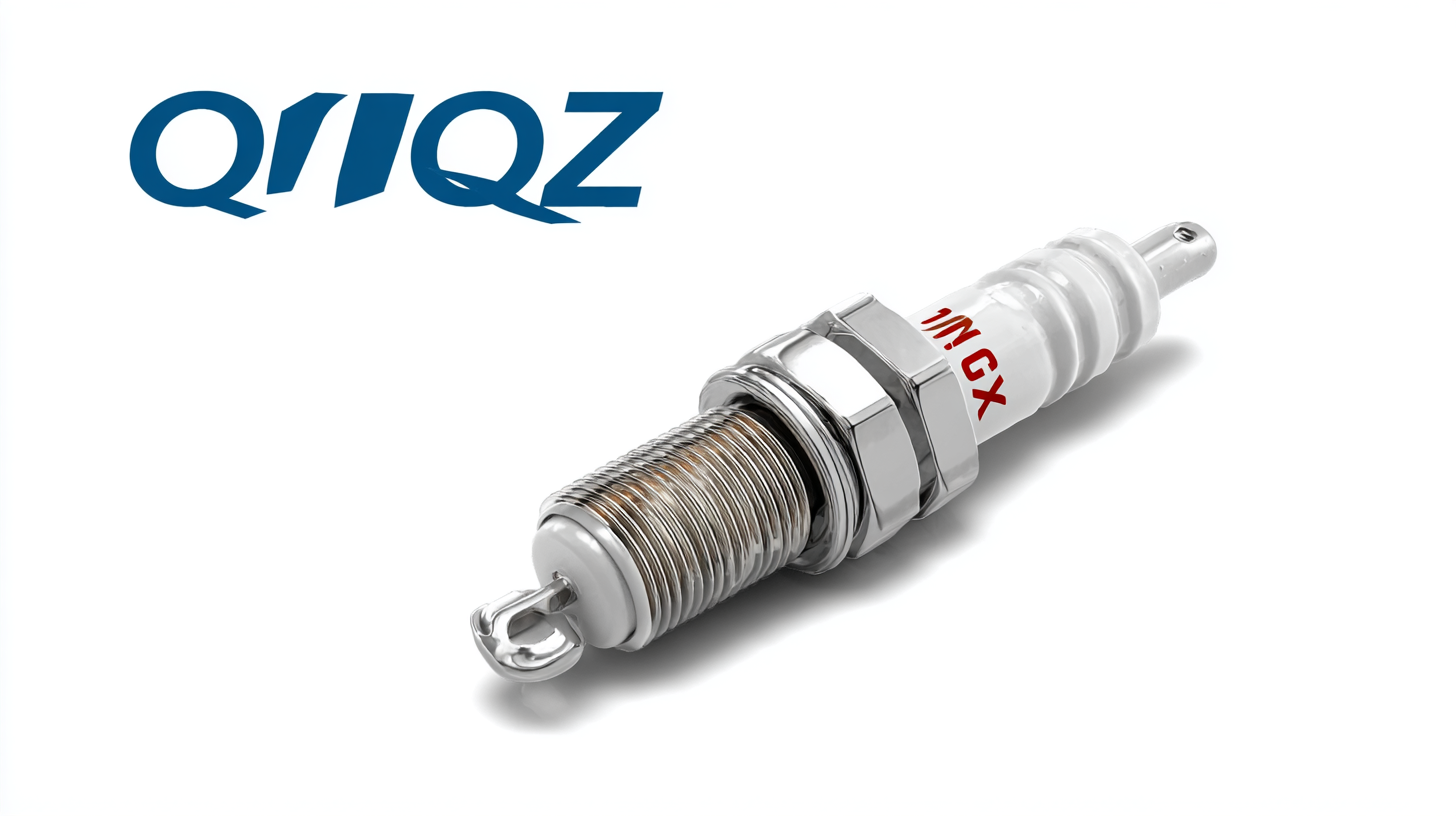
-
Home
-
About Us
-
Products
-
News
-
Blog
-
Contact Us
Leave Your Message

As the demand for reliable electrical protection continues to grow, the importance of high-quality Zinc Oxide Surge Arresters cannot be overstated. According to a recent market report from Research and Markets, the global surge arrester market is projected to reach $2.36 billion by 2027, driven by increasing investments in renewable energy and the growing need for infrastructure resilience against natural disasters. Zinc oxide surge arresters, known for their superior voltage-clamping performance and durability, are becoming the preferred choice among manufacturers and utility providers alike. With China emerging as a key player in this segment, selecting the right manufacturer is crucial for ensuring optimal product performance and reliability. This blog will explore the characteristics of top-tier providers, offering insights into how to identify premium quality zinc oxide surge arresters that meet evolving industry standards.

Zinc oxide surge arresters (ZOSAs) are critical components in protecting electrical systems from transient overvoltages. Various types of ZOSAs exhibit distinct characteristics that influence their performance and reliability. For instance, the IEEE model for metal oxide surge arresters highlights the importance of fast-front overvoltages, underscoring the need for advanced designs that can mitigate these surges effectively. Recent studies have shown that the understanding of aging phenomena in these devices can be enhanced through monitoring the fifth harmonic of the leakage current, providing insights into their operational health and potential failure points.
Research also indicates that implementing reliability-centered condition-based maintenance (RCCM) can significantly improve the fault assessment and longevity of zinc oxide lightning arresters. This maintenance approach not only ensures that the devices operate efficiently but also extends their service life by addressing issues before they escalate into failures. The optimization of technological processes in manufacturing varistors from recycled ZnO has become increasingly relevant, as it not only enhances environmental sustainability but also contributes to higher efficiency in production, reflecting a growing trend within the industry towards sustainable practices.
| Type | Voltage Rating (kV) | Energy Absorption Capacity (J) | Capacitance (nF) | Temperature Coefficient (%/°C) |
|---|---|---|---|---|
| Non-linear Resistor Type | 10 | 4000 | 150 | -0.02 |
| Metal Oxide Varistor (MOV) | 15 | 6000 | 100 | -0.03 |
| Gapped Type | 20 | 8000 | 200 | -0.01 |
| Surge Capacitor Type | 25 | 10000 | 75 | -0.025 |
Zinc oxide surge arresters (ZOSAs) are becoming increasingly essential across various industries, primarily due to their effectiveness in protecting sensitive electronic equipment from voltage spikes. The widespread use of high energy varistors in ZOSAs has revolutionized the approach to surge protection. For instance, in automotive applications, these surge arresters play a crucial role in safeguarding electronic control units (ECUs), which are vital for modern vehicles' functionality. According to a recent industry report, the automotive sector accounted for over 35% of the total ZOSA market share in 2022, reflecting its critical status in electronic protection.
In addition to the automotive industry, ZOSAs are extensively utilized in telecommunications, power generation, and industrial electronics. The global surge protection device market is projected to grow at a CAGR of approximately 7.5% from 2023 to 2030, driven largely by increasing investments in infrastructure development and rising concerns over lightning strikes and power surges. High energy varistors are particularly favored for their superior thermal stability and performance, which make them ideal for high-stress environments, ensuring equipment longevity and operational reliability. This surge in demand highlights the pivotal role of zinc oxide surge arresters in modern industrial applications, as businesses seek robust solutions to mitigate electrical disturbances.
The demand for premium quality zinc oxide surge arresters has seen significant growth, particularly in regions like Asia and Europe, where the market is projected to reach $1.5 billion by 2025 according to a recent industry report. As global leaders in the production of these components, Chinese manufacturers have positioned themselves to meet this demand through advanced technology and strict quality control processes, resulting in products that not only comply with international standards but also excel in performance.
A comparative analysis reveals that Chinese zinc oxide products offer exceptional longevity and resilience. Data shows that these surge arresters can withstand surge currents up to 100 kA, considerably higher than the average 60 kA seen in competitor products. This is essential for safeguarding electrical equipment against voltage spikes, making them an attractive choice for industries reliant on uptime and reliability.
**Tips:** When selecting zinc oxide surge arresters, consider products with higher technical specifications such as current rating and energy absorption capabilities to ensure maximum protection. Additionally, look for manufacturers that provide detailed test reports and certifications to guarantee product quality. Always consult industry reviews to verify performance claims and choose brands with a solid reputation in the market.

When selecting a zinc oxide surge arrester, several key features should be prioritized to ensure optimal performance and reliability. One critical aspect is the voltage rating, which should align with the system’s operating conditions. According to market research, the global surge protection devices market is projected to grow at a CAGR of 6.4% from 2021 to 2026, underscoring the increasing demand for effective protective solutions in power systems. Typically, zinc oxide surge arresters are rated between 1 kV and 1 MV, making them suitable for a wide range of applications, from residential to industrial.
Another vital feature to consider is the energy absorption capacity, as it determines the device's ability to handle surges without failure. Premium quality zinc oxide surge arresters should exhibit high energy absorption capability, typically between 10 to 120 kJ/kV. Furthermore, the mechanism of operation is equally important. Devices with superior nonlinear resistance characteristics can better manage voltage spikes, providing enhanced protection against transients. As the demand for reliable electrical systems continues to rise, selecting the right zinc oxide surge arrester becomes essential for modern infrastructure development and sustainability efforts.
This bar chart illustrates the market share importance rating of key features to consider when selecting zinc oxide surge arresters. Features include Voltage Rating, Energy Absorption Capacity, Clamping Voltage, Response Time, and Durability, rated on a scale from 1 to 10.
The rapid evolution of technology has significantly enhanced the performance and reliability of zinc oxide surge arresters (ZOSAs). As a critical component in power systems, ZOSAs protect electrical equipment from voltage surges caused by lightning strikes and switching events. Innovations in materials science, particularly advancements in the manufacturing of zinc oxide, have led to surge arresters that not only offer superior voltage resistance but also a longer lifespan compared to traditional silicon carbide alternatives. This improved durability ensures that infrastructure remains resilient against unpredictable electrical disturbances, thereby safeguarding vital energy resources.
Furthermore, the integration of smart technology into zinc oxide surge arresters is paving the way for enhanced monitoring and diagnostic capabilities. Modern ZOSAs can now be equipped with IoT sensors that provide real-time data on their operational status, allowing for proactive maintenance and reducing downtime. This trend toward smart systems reflects a broader desire within the industry to leverage innovative technology to streamline operations and enhance safety protocols. As global leaders in this field, Chinese manufacturers are at the forefront of these advancements, producing high-quality ZOSAs that are not only effective but also essential for the evolving landscape of power management.
